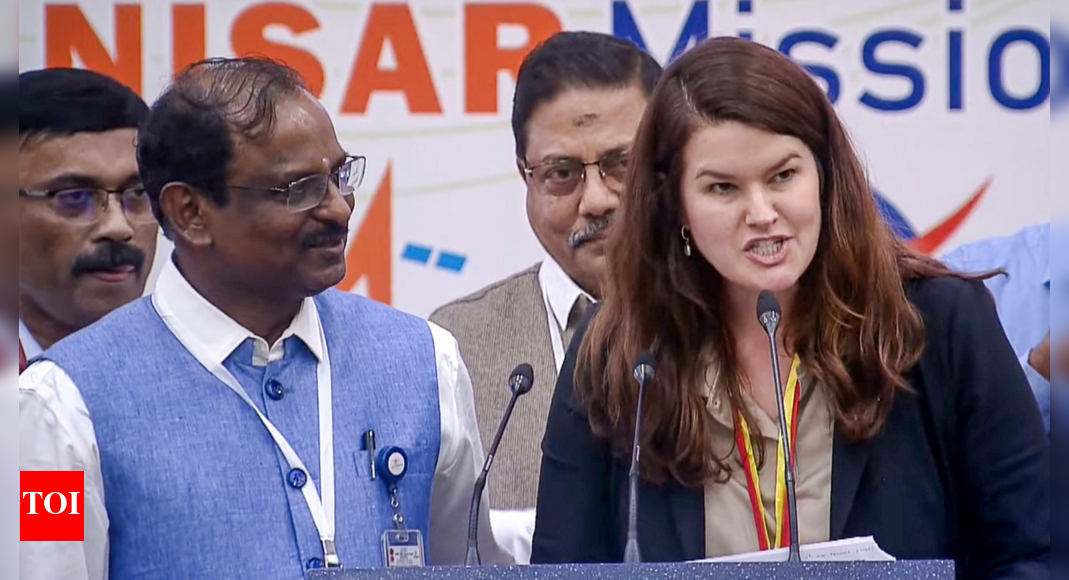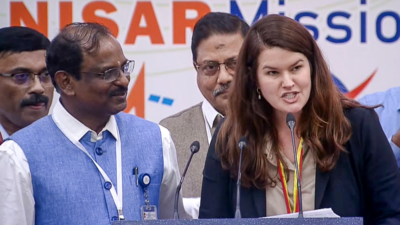‘Two-eyed’ NISAR satellite will scan every piece of Earth | India News

NEW DELHI: The NASA-ISRO Synthetic Aperture Radar (NISAR) programme cost the US and India over $1.5 billion. But there is an important question to be asked: What was the need for such a huge investment when hundreds of earth observation satellites are already in space? The answer is that the world had never developed a dual-frequency band satellite.NISAR has two synthetic aperture radars of different bands that will operate in tandem. It will be a ‘satellite with two eyes in space” keeping a hawk’s eye on the Earth and scanning every piece of our planet for minute details.“Our planet surface undergoes constant and meaningful change. Some change happens slowly. Some happens abruptly. Some changes are large, while some are subtle,” Karen St Germain, director of Nasa’s Earth Science division, explained. Calling NISAR “the most sophisticated radar we’ve ever built and a model for the next generation of Earth-observation capabilities”, Germain said, “We’ll see land substance and swelling, movement, deformation and melting of mountain glaciers and ice sheets covering both Greenland and Antarctica, and, of course, we’ll see wildfires”.It’s “a first-of-its-kind, jewel radar satellite that will change the way we study our home planet and better predict a natural disaster before it strikes,” Nasa’s science mission chief Nicky Fox said ahead of liftoff. Congratulating Isro and Nasa, space minister Jitendra Singh called the NISAR mission a “game changer in precise management of disasters”.The L-band SAR, provided by Nasa, uses higher wavelength microwaves and can penetrate tree cover for vegetation, sand and ice. It will capture minute details of surface undulations and see through dense forest cover. The S-band SAR, provided by Isro, which has a shorter wavelength, will capture larger features like crop fields and water bodies.L-band and S-band SARs together will provide a comprehensive picture of the observed area — generating detailed imagery that is not possible even by integrating data of two separate satellites with different bands. Putting two radars of different bands on the same satellite was therefore the biggest engineering challenge for both Nasa and Isro, which they finally managed to overcome, though it took them 10 years to develop the 2,392-kg marvel.Equipped with a 12-metre dish that will unfold in space, NISAR will record nearly all of Earth’s land and ice twice every 12 days from an altitude of 747 km.By picking up tiny changes in the vertical movement of the Earth’s surface — as little as 1 cm (0.4 inches) — scientists will be able to detect precursors to natural and human-caused disasters, from earthquakes, landslides and volcanoes to aging infrastructure like dams and bridges.The data from NISAR will be turned into three-dimensional maps that will not only help scientists and policymakers respond to natural disasters but also assist farmers by monitoring soil moisture and crop growth.Indian space industry representative Anil Prakash, DG, SatCom Industry Association (SIA-India), hailed the NISAR mission and Indo-US space collaboration. “The successful Nasa-Isro collaboration on the $1.5 billion NISAR mission marks a defining moment in global space diplomacy. It brings together cutting-edge American L-band SAR systems and India’s expertise in engineering, integration, and cost-effective launch capability via GSLV-F16,” Prakash said. “Isro’s contribution, including the S-band radar, satellite bus, launch services, and mission operations, once again demonstrates India’s ability to build and deliver complex systems with remarkable reliability. With a legacy of over 400 international satellite launches, Isro has emerged not just as a collaborator, but as a co-architect of next-generation Earth science missions,” he added.





